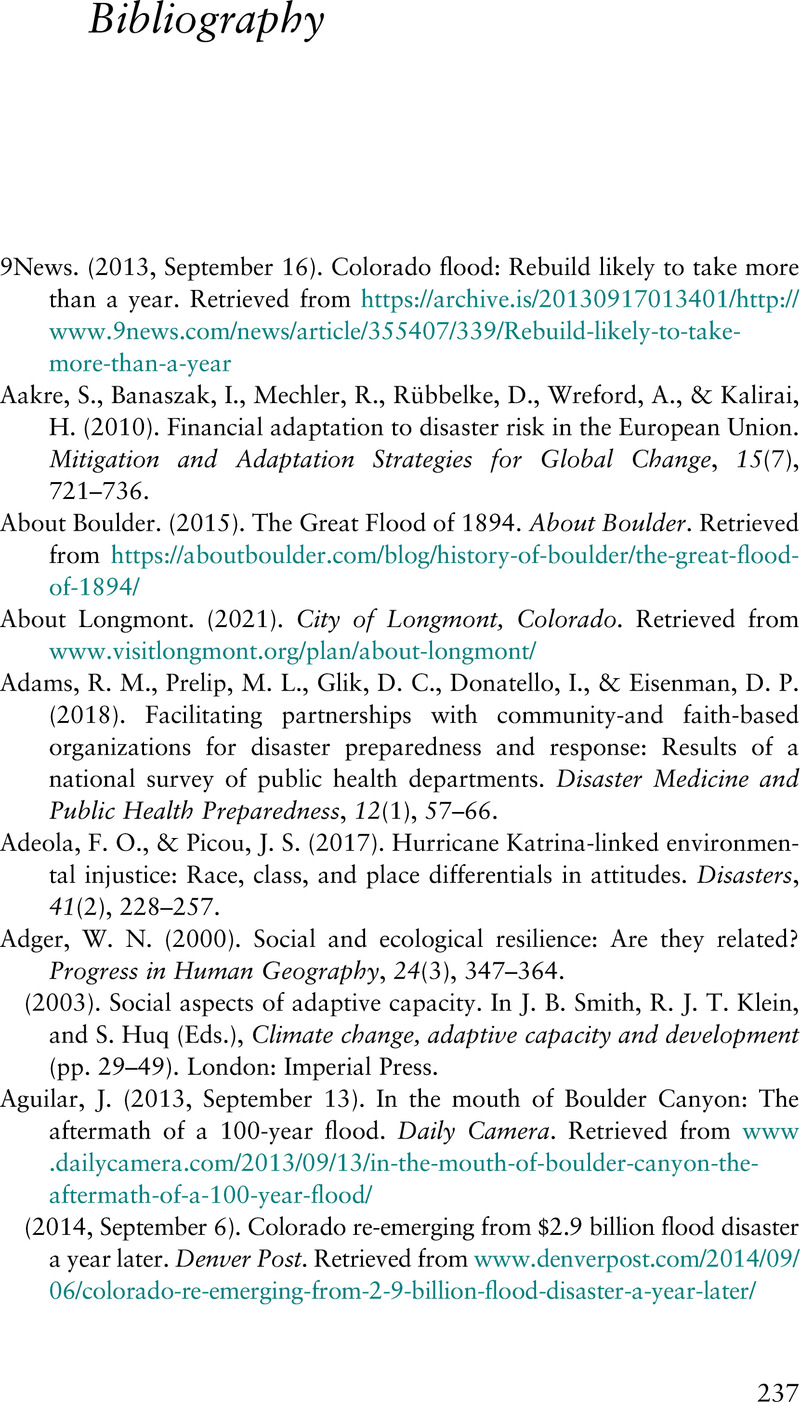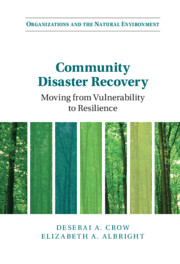Book contents
- Community Disaster Recovery
- Organizations and the Natural Environment
- Community Disaster Recovery
- Copyright page
- Dedication
- Contents
- Figures
- Tables
- About the Authors
- Foreword
- Preface
- Acknowledgments
- Abbreviations
- Part I Introduction
- Part II Damage and Resources
- Part II Review
- Part III Individual Beliefs
- Part III Review
- Part IV Individual and Group Engagement
- Part IV Review
- Part V Connections, Conclusions, and Recommendations
- Book part
- Bibliography
- Index
- References
Bibliography
Published online by Cambridge University Press: 08 October 2021
- Community Disaster Recovery
- Organizations and the Natural Environment
- Community Disaster Recovery
- Copyright page
- Dedication
- Contents
- Figures
- Tables
- About the Authors
- Foreword
- Preface
- Acknowledgments
- Abbreviations
- Part I Introduction
- Part II Damage and Resources
- Part II Review
- Part III Individual Beliefs
- Part III Review
- Part IV Individual and Group Engagement
- Part IV Review
- Part V Connections, Conclusions, and Recommendations
- Book part
- Bibliography
- Index
- References
Summary

- Type
- Chapter
- Information
- Community Disaster RecoveryMoving from Vulnerability to Resilience, pp. 237 - 265Publisher: Cambridge University PressPrint publication year: 2021



